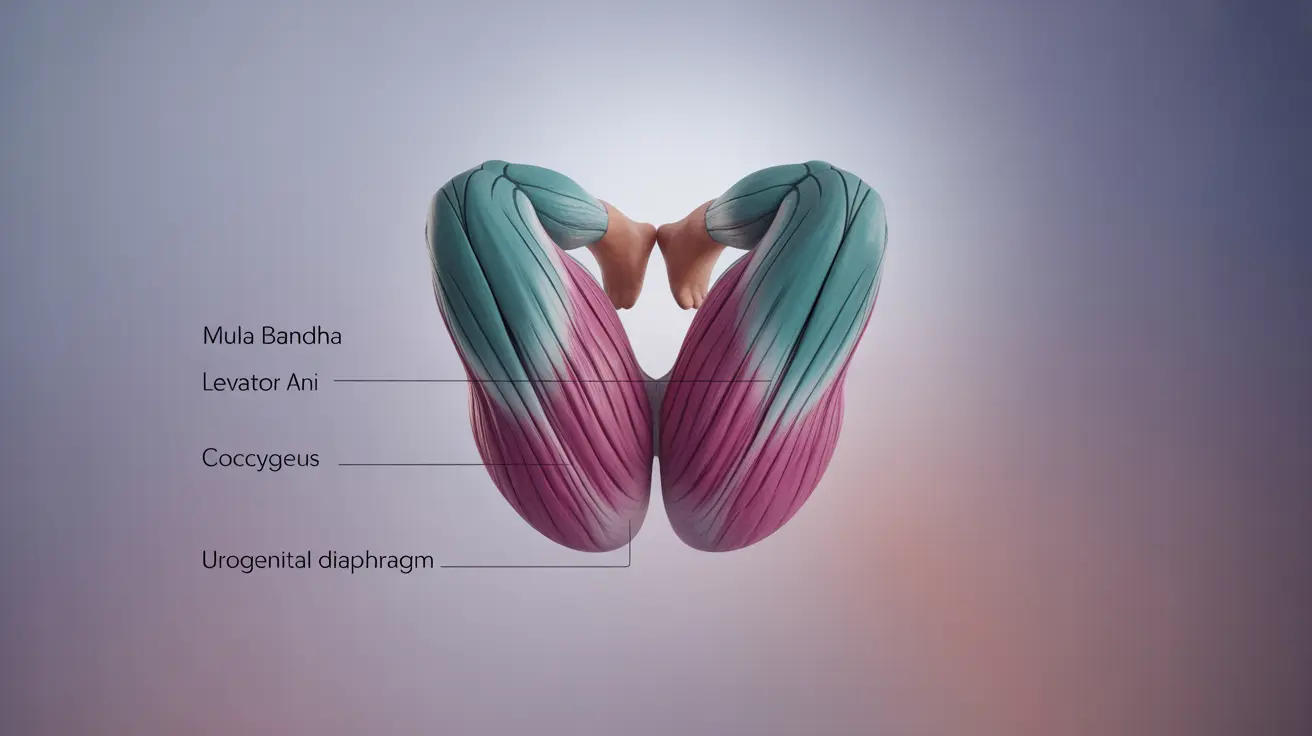Mula bandha, an ancient yogic practice, is gaining recognition as a powerful technique for improving pelvic floor health and overall well-being. This root lock technique not only enhances yoga practice but also offers significant benefits for bladder control, core stability, and reproductive health. Understanding and mastering mula bandha can be transformative for those seeking to strengthen their pelvic floor muscles naturally.
What is Mula Bandha?
Mula bandha, literally translated as "root lock" or "base lock" in Sanskrit, is an energetic and physical practice that involves consciously engaging and lifting the pelvic floor muscles. This practice creates a subtle lifting sensation from the perineum through the central channel of the body. Unlike simple Kegel exercises, mula bandha integrates breath work, mindfulness, and precise muscle control to achieve optimal pelvic floor activation.
The Anatomy of Mula Bandha
The pelvic floor consists of multiple layers of muscles that form a hammock-like structure supporting the pelvic organs. When practicing mula bandha, you're primarily engaging the following muscle groups:
- Levator ani muscles
- Coccygeus muscles
- External anal sphincter
- Urogenital diaphragm
Understanding this anatomical foundation helps practitioners better visualize and engage the correct muscle groups during practice.
Proper Mula Bandha Technique
Mastering mula bandha requires attention to detail and proper form. Here's how to practice effectively:
Finding the Right Position
Begin by sitting in a comfortable position with your spine straight. You can practice in easy pose (sukhasana), hero pose (virasana), or even on a chair with both feet flat on the ground.
The Engagement Process
- Start with several deep breaths to relax and center yourself
- Locate your pelvic floor muscles by imagining stopping the flow of urine
- Gently contract and lift these muscles while maintaining normal breathing
- Hold the contraction for 5-10 seconds
- Release completely and rest for the same duration
Benefits of Regular Practice
Consistent mula bandha practice offers numerous advantages:
- Improved bladder control
- Enhanced core stability
- Better sexual function
- Increased awareness of pelvic floor health
- Support for spinal alignment
- Deeper meditation and pranayama practice
Integration with Daily Life
While mula bandha is traditionally practiced during yoga, you can incorporate it into your daily routine. Practice while sitting at your desk, standing in line, or during other routine activities. This integration helps build strength and awareness throughout the day.
Frequently Asked Questions
What is mula bandha and how does it help strengthen the pelvic floor muscles? Mula bandha is a yogic root lock that involves consciously engaging and lifting the pelvic floor muscles. It strengthens these muscles through controlled contraction and release, improving their tone and function while enhancing overall pelvic stability.
How do you correctly perform mula bandha to improve bladder control and reduce urinary incontinence? To correctly perform mula bandha, sit with a straight spine, locate your pelvic floor muscles, and gently contract and lift them while maintaining normal breathing. Hold for 5-10 seconds, then release completely. Practice with awareness and avoid excessive tension.
Can practicing mula bandha during pregnancy and postpartum support pelvic floor recovery? Yes, mula bandha can be beneficial during pregnancy and postpartum recovery when practiced appropriately. However, always consult with your healthcare provider before starting any new exercise routine during these periods.
What are the benefits of mula bandha compared to traditional Kegel exercises? Mula bandha offers a more holistic approach than Kegel exercises by incorporating breath awareness, meditation, and energy work. While Kegels focus solely on muscle contraction, mula bandha integrates mind-body connection and proper breathing techniques.
How often should I practice mula bandha for the best results in pelvic floor health? For optimal results, practice mula bandha 2-3 times daily, starting with 5-10 repetitions per session. Gradually increase duration and frequency as your strength improves, but avoid overexertion. Consistency is more important than intensity.




